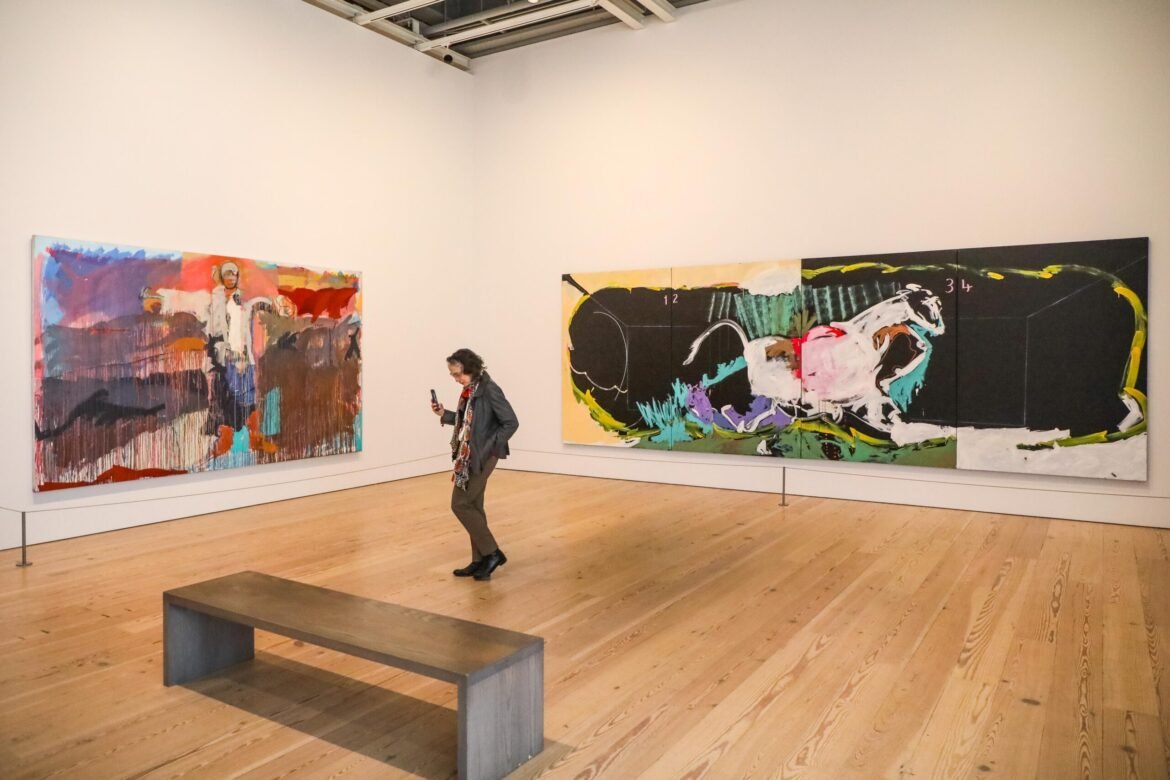
The art world turned out in droves last Tuesday for a peek at the Whitney Museum of American Art’s 81st Whitney Biennial, which opens to the public on Wednesday. Since debuting in 1932 as the Whitney Annual, the sweeping survey of contemporary American art has become both a barometer and tastemaker. This year’s 71 participating artists and collectives present a powerful crash course on the current landscape, all in one place.
Whitney curators Chrissie Iles and Meg Onli hit the road for two years to scope out artists for “Even Better Than The Real Thing.” Each Biennial has different organizers, who pick a different theme. This one unpacks the nature of reality itself, in lieu of tackling society’s many actually real tensions right now.
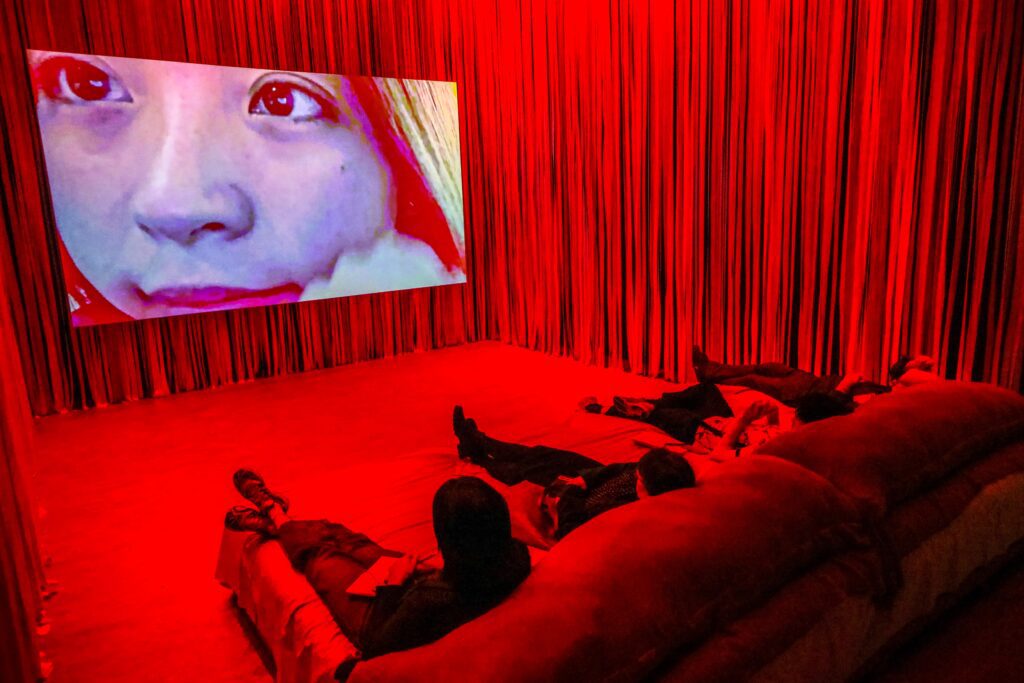
‘In Her Time (Iris’s Version),’ by Diane Severin Nguyen (Photo by Scott Lynch)
The notoriously politicized Whitney Biennial typically provokes protest, but this year’s edition has witnessed just one act of dissent so far: Portland-based Demian DinéYazhi’s neon and steel sculpture “we must stop imaging apocalypse/genocide + we must imagine liberation” (2024) beams messages out of the museum’s fifth floor gallery onto New Jersey, including one that reads “Free Palestine.” Eight artists withdrew from the 2019 Biennial because a company owned by Whitney vice chairman Warren Kanders manufactured tear gas that Israeli forces used on protesters in Gaza. Kanders stepped down in 2019 and this year, Korakrit Arunanondchai, one of the artists who withdrew, actually helped plan the Biennial’s adjacent performance schedule.
The most controversial work in this show, it seems, is its sole first floor installation — where L.A.-based Ser Serpas has arranged detritus like deflated balloons and collapsed tent frames into a schema that writers found ugly at first. Still, no mobs appeared. Whitney staff protested the 2022 Biennial, but the museum has since struck a deal with their union.
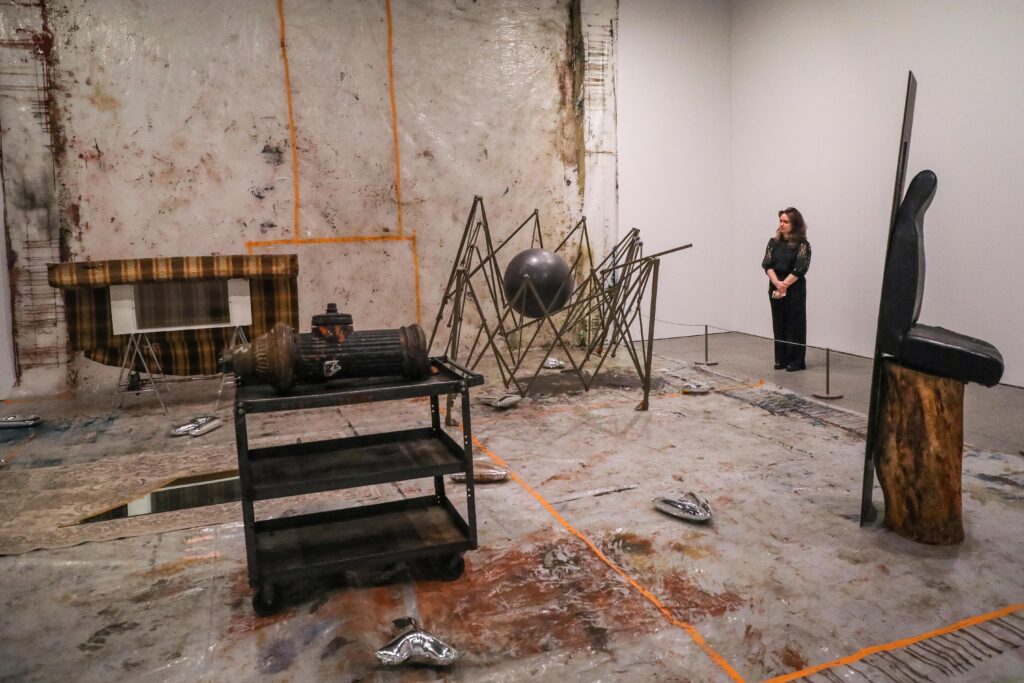
‘taken through the back entrances subtle fate matching matte thing soiled,’ by Ser Serpas (Photo by Scott Lynch)
Demonstrators have demanded diversity for decades, and this year, their efforts paid off. Participating artists vary vastly in age, race, gender and orientation. What’s more, the Biennial pushes the idea of what art can be. Here, visitors will find 3-D printed Mayan instruments that L.A.-based Clarissa Tossin scanned at museums, and Baltimore-based Suzanne Jackson’s suspended paintings without surfaces. They’re made of paint, but are they paintings? These varied approaches interrogate what “real” even means in our present paradigm. The show layout requires visitors to chart their own exploration of the matter.
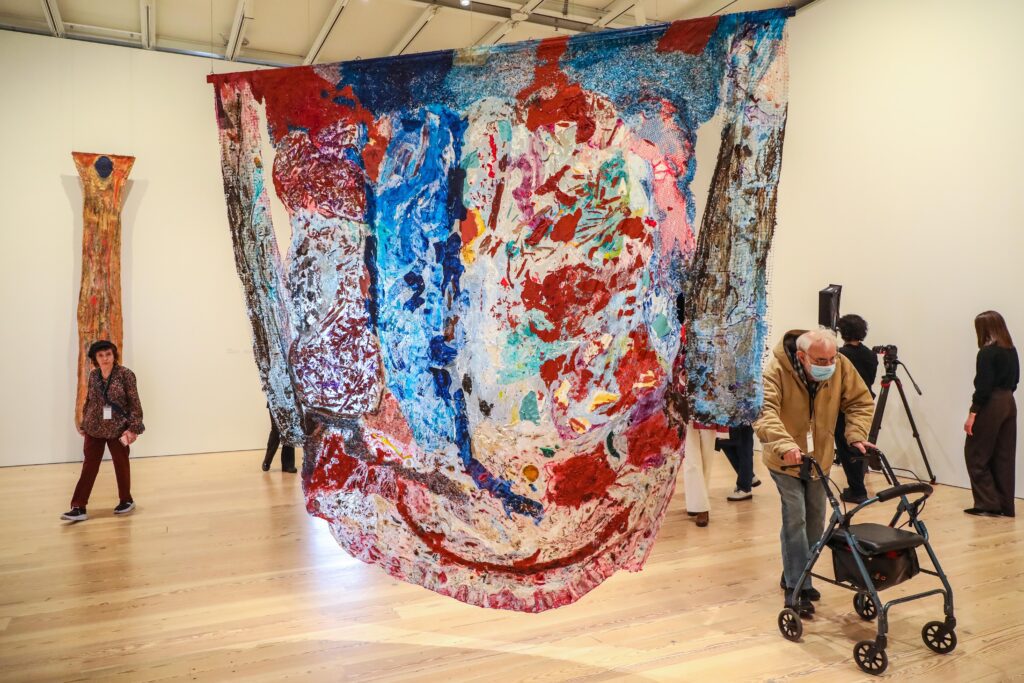
‘deepest ocean, what do we not know, we might see?’ by Suzanne Jackson (Photo by Scott Lynch)
An abstract soundscape by Brooklyn-based singer Holland Andrews beckons viewers upstairs to the show. Her gentle vocal nonsense wafts from five speakers suspended in the five story stairwell at varied heights. The elevator plays another track featuring mechanical sounds.
A standalone installation by Long Beach-based Pippa Garner occupies the show’s third floor. This beloved artist has satirized post-war commercialism through the lens of hot rods and the trans experience for decades. A previous iteration of her “Inventors Office” (2021-24) reconstructed a work space, but the Biennial’s edition simply papers a long wall of wood paneling with pinups, magazines, and sketches depicting absurd car modifications like the “Eject-O-Matic” — a historic study of sales tactics that subtly charts Garner’s own transition since the 1980s.
Follow the sound of Andrews’s voice up two more floors, where a translucent black plane by Brooklyn-based Charisse Pearlina Weston looms over the entryway to the heart of the Biennial.
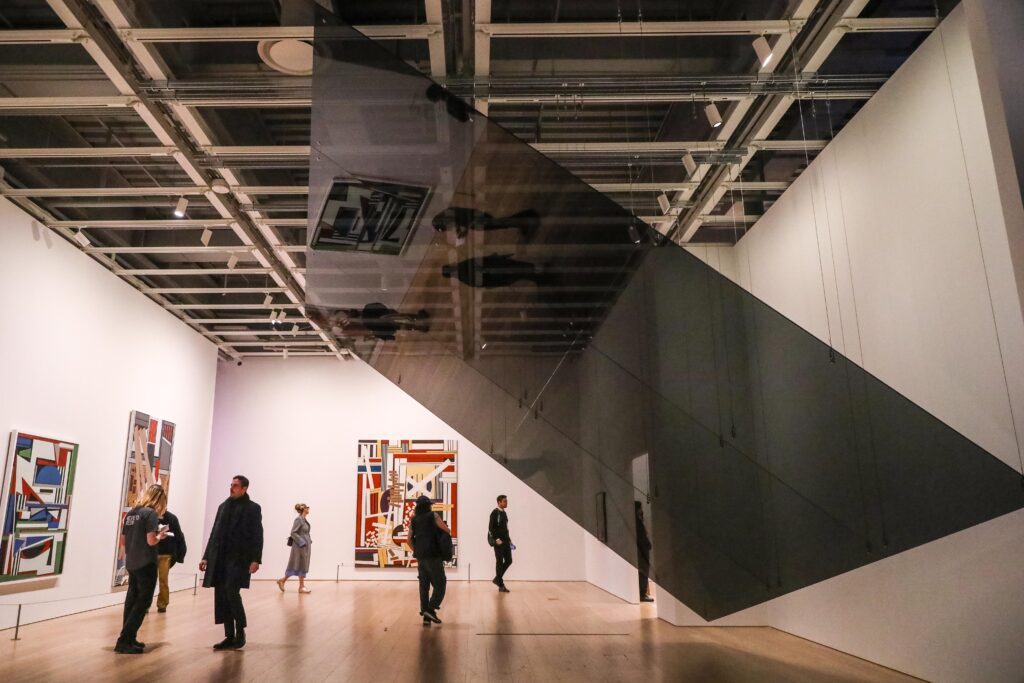
‘un-‘ by Charisse Pearlina Weston (Photo by Scott Lynch)
Three abstractions by late Jamaican-born and Chelsea-based painter Mavis Pusey remind viewers this space still has walls — even though their tumbling geometric forms were inspired by demolition.
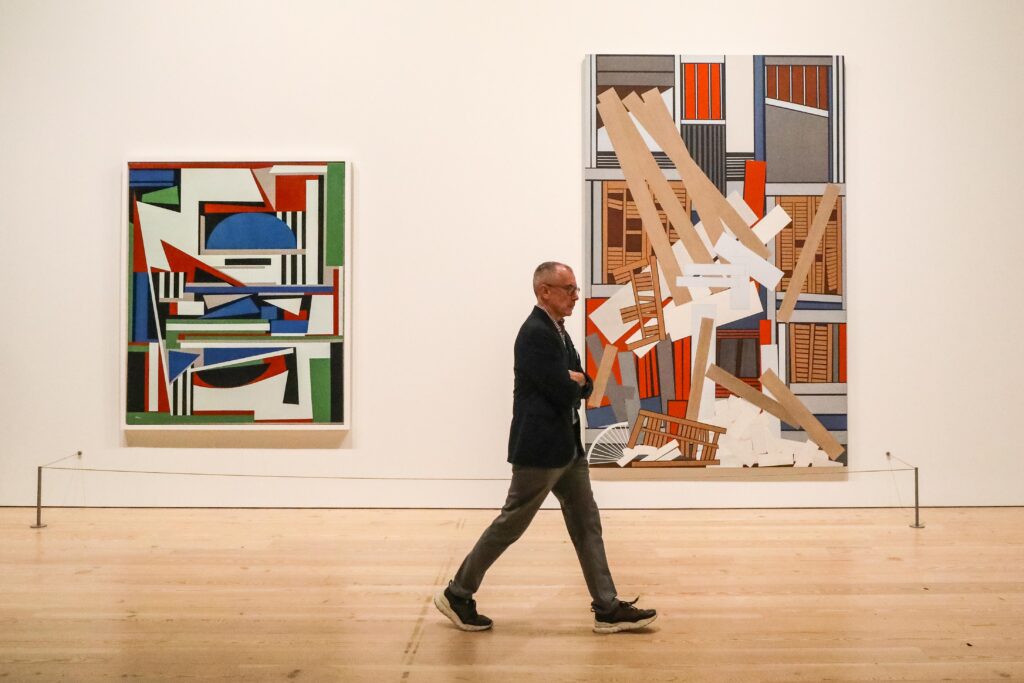
‘Dejygea’ and ‘Untitled,’ by Mavis Pusey (Photo by Scott Lynch)
To the right, a floral portal ushers guests into a screening of New York-based Tourmaline’s short black and white film “Pollinator” (2022). The dreamy production splices clips of her traipsing the Brooklyn Botanic Garden with archival shots of Black trans activist Marsha P. Johnson. In 2012, Tourmaline organized extensively to successfully help establish Johnson as a household name.
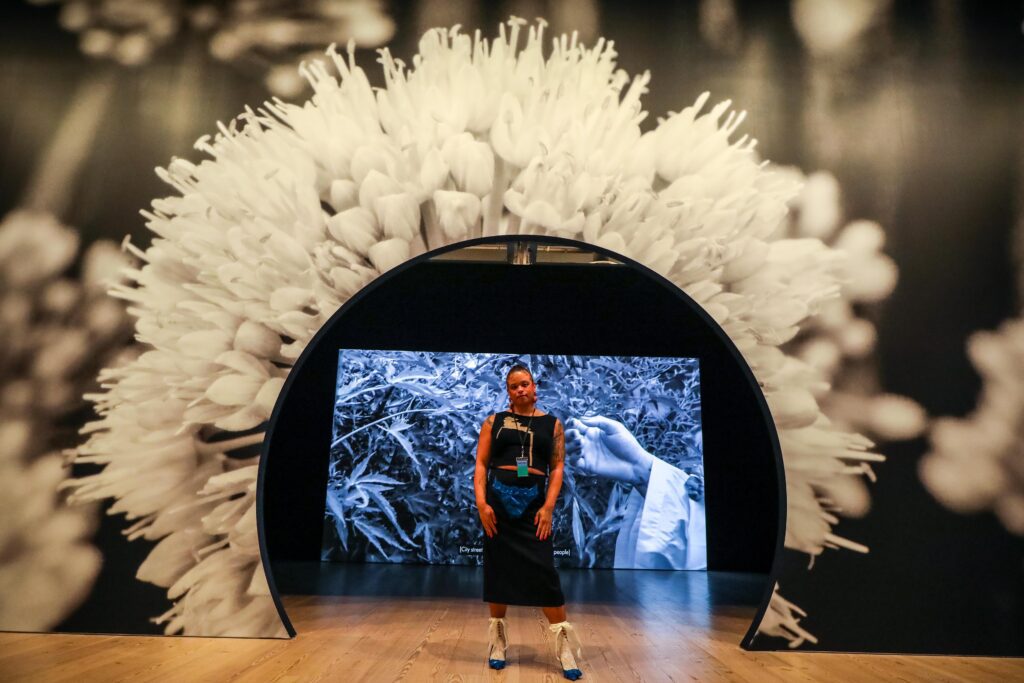
‘Pollinator,’ by Tourmaline (Photo by Scott Lynch)
Fabric masquerades as stone in London-based Dala Nasser’s site-specific “Adonis River” (2023), where the artist has draped a sprawling temple’s wooden skeleton in bed sheets that are dyed with clay from Lebanon’s Adonis River. They bear rock rubbings from Adonis Cave, also. Next, an intimate space hosting Brooklyn-based Jes Fan’s sculptures made from 3-D printed CAT scans of his knees, intestines and hip muscles opens up on a wide gallery where huge sheets of film by New York-based Lotus L. Kang cascade from metal armatures, with delicate aluminum sculptures scattered throughout. The art touches back.
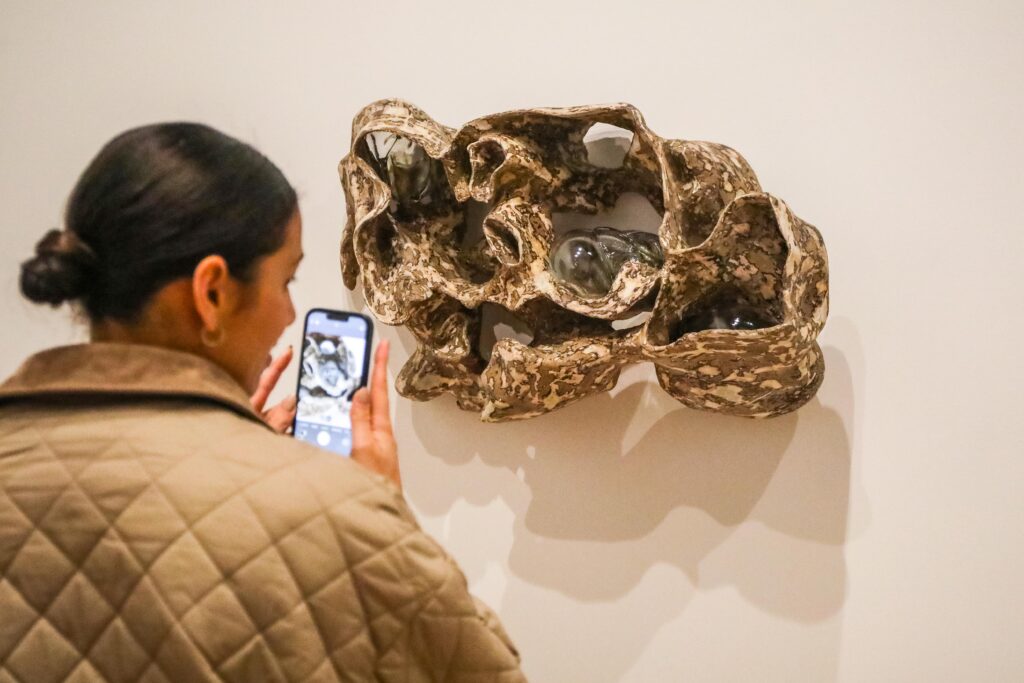
“Cross Section (Right Leg Muscle III),’ by Jes Fan (Photo by Scott Lynch)
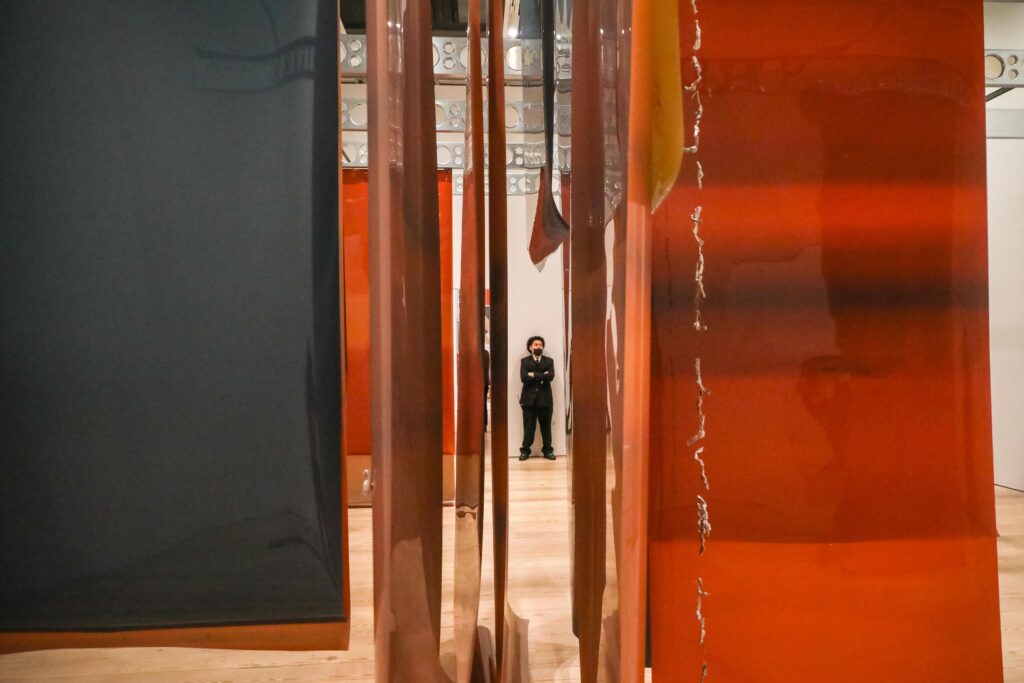
‘In Cascades,’ by Lotus L. Kang (Photo by Scott Lynch)
Inside, New York-based Constantina Zavitsanos combines two works in one installation: “Call to Post (Violet)” (2019) sets the scene, encompassing a carpeted ramp where viewers can lay back to bask in extraterrestrial blue-violet light while infrasonic sound waves thump their backs from beneath. Two walls display “All The Time” (2019), a projection of overlapping captions that read like forlorn dispatches from ground control. This otherworldly setup fosters “collective acts of sensing and feeling,” wall text says, through overlooked perspectives like those of the deaf.
Glinting silver walls draw viewers into British filmmaker Isaac Julien’s “diasporic dream space” titled “Once Again… Statues Never Die” (2022). His installation critiques the way that museums have historically collected African art in a moving five channel, 31 minute film where Harlem Renaissance leader Alain Locke (played by Holland André) dialogues with art collector Albert Barnes (Danny Huston). Two sculptures Richmond Barthé made in the 1930s and three recent sculptures by Matthew Angelo bridge past and present, grounding this place of meditation in time.
Guests must take an elevator to the sixth floor, where doors open on a yellow alcove drenched in acrid light — with a buzzing, electrified net for a ceiling. Drawing on a background in choreography, L.A.-based P.Staff’s “Afferent Nerves” (2023) is literally electrified, giving visitors a frisson of adrenaline from the genuine risk of getting shocked. Next, pour over Columbus-based Carmen Winant’s wall of 2,500 film photos documenting abortion activism, then enter a lush magenta room screening New York-based Diane Severin Nyguen’s film “In Her Time (Iris’s Version)” (2023-24). We ran into art critic Andrea Scott after she watched the full 67-minute feature about an aspiring starlet. Scott said the drama reoriented her view of the entire Biennial.
Harmonies abound across “Even Better Than The Real Thing.” On the fifth floor, abstractions by Santa Monica-based Takako Yamaguchi swirl in synchronicity with Philadelphia-based Karyn Olivier’s two assemblages of seafaring detritus like driftwood and lobster traps, which contemplate environmentalism and migration.
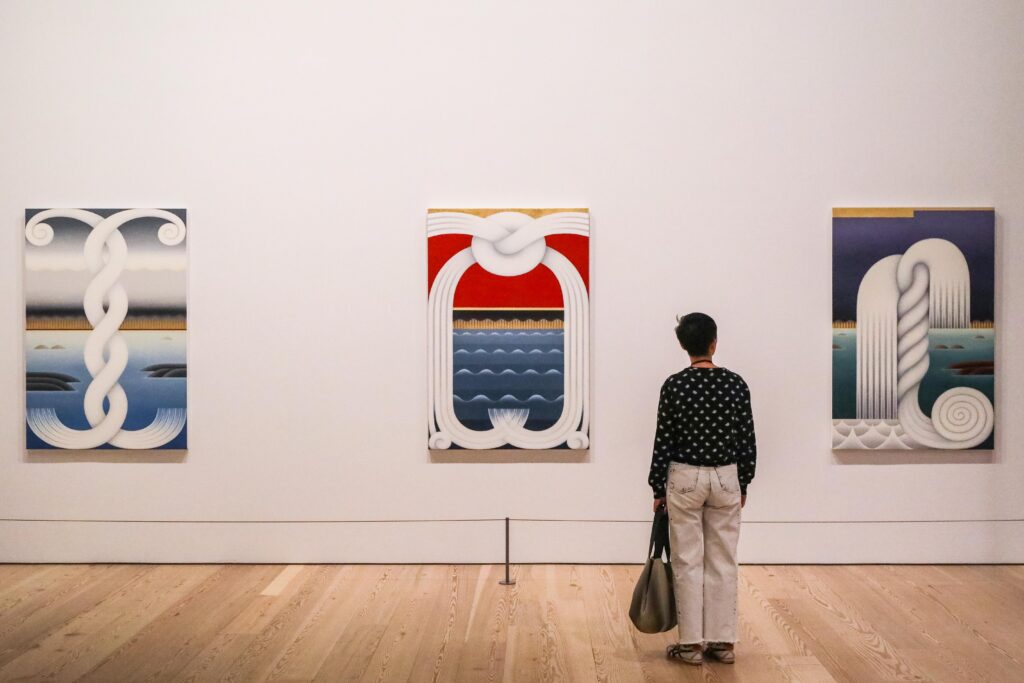
‘Proxy,’ ‘Clasp,’ and ‘Formula,’ by Takako Yamaguchi (Photo by Scott Lynch)
Meanwhile, paintings by Oakland-based Mary Lovelace O’Neal and Placitas-based Maja Ruznic illustrate the legacy of painters deconstructing bodies through a post-humanist lens — before and after ecology and artificial intelligence unseated human supremacy.
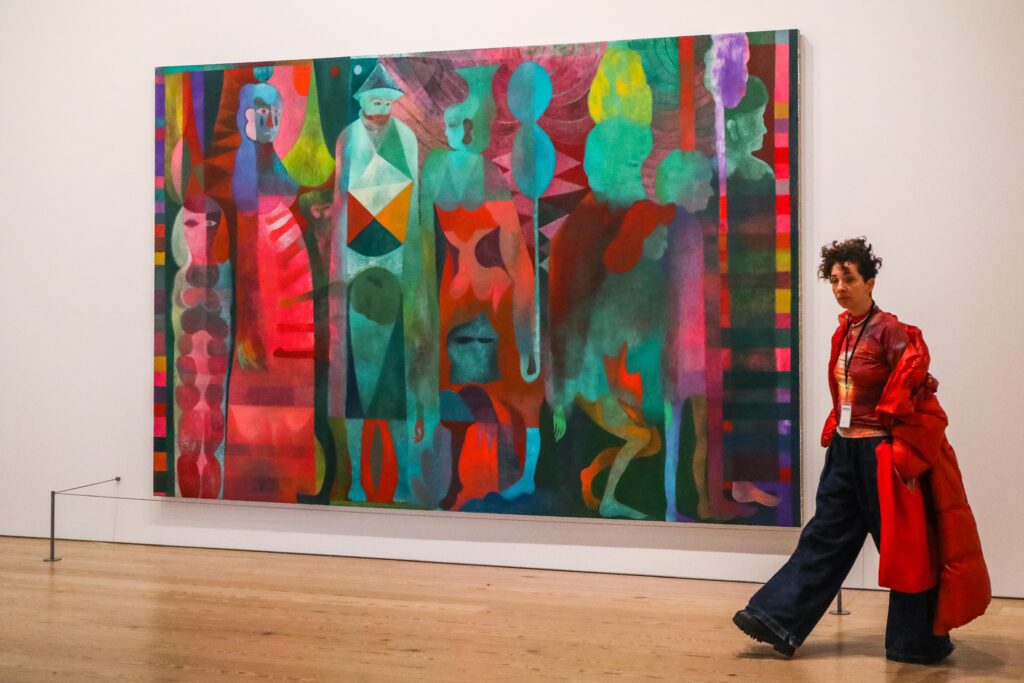
‘The Past Awaiting the Future/Arrival of Drummers,’ by Maja Ruznic (Photo by Scott Lynch)
On the sixth floor, L.A.-based Eddie Rodolfo Aparacio encases paperwork from white activists in an iridescent, ever-shifting block of tree amber. Outside, visible through glass walls — an equally volatile earthen White House by Brooklyn-based Kiyan Williams lapses lopsided to the ground.
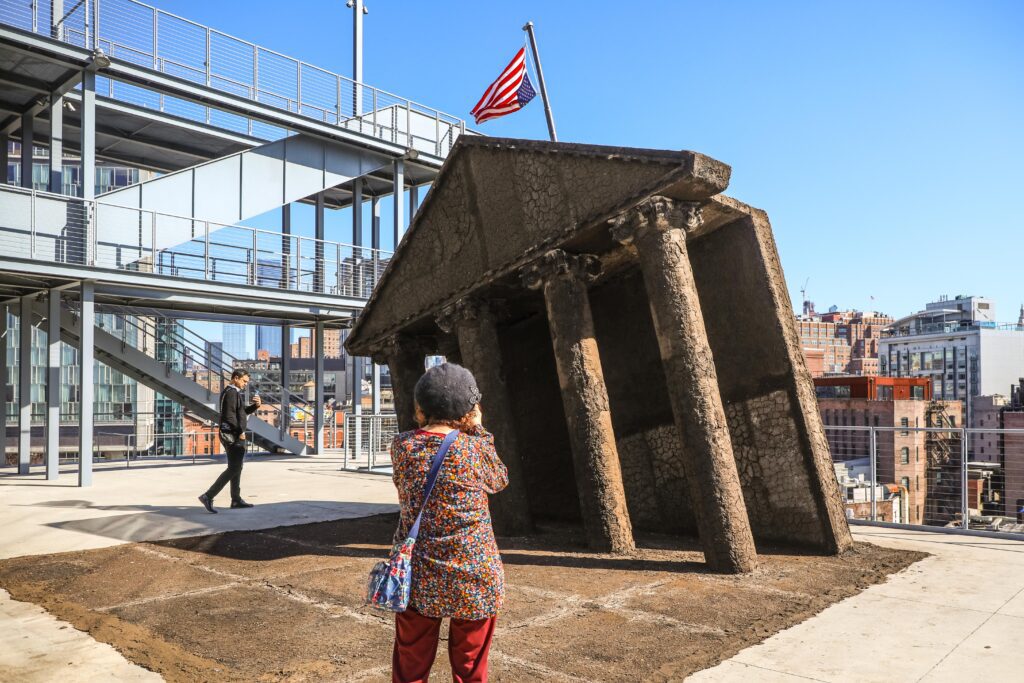
‘Ruins of Empire II or The Earth Swallows the Master’s House,’ by Kiyan Williams (Photo by Scott Lynch)
But does “Even Better Than The Real Thing” address the the full breadth of America’s problems? Most of the artworks here make a case against some other reality. So where’s the antagonist? It’s mostly in the negative space, reading between the lines of Philadelphia-based Sharon Hayes’s semicircle of cheap chairs around footage of a queer talk circle or Glorieta-based Cannupa Hanska Luger’s inverted teepee — critiques of market-driven systems of oppression, the forces benefitting from them, and knee jerk reactions to such commentary.
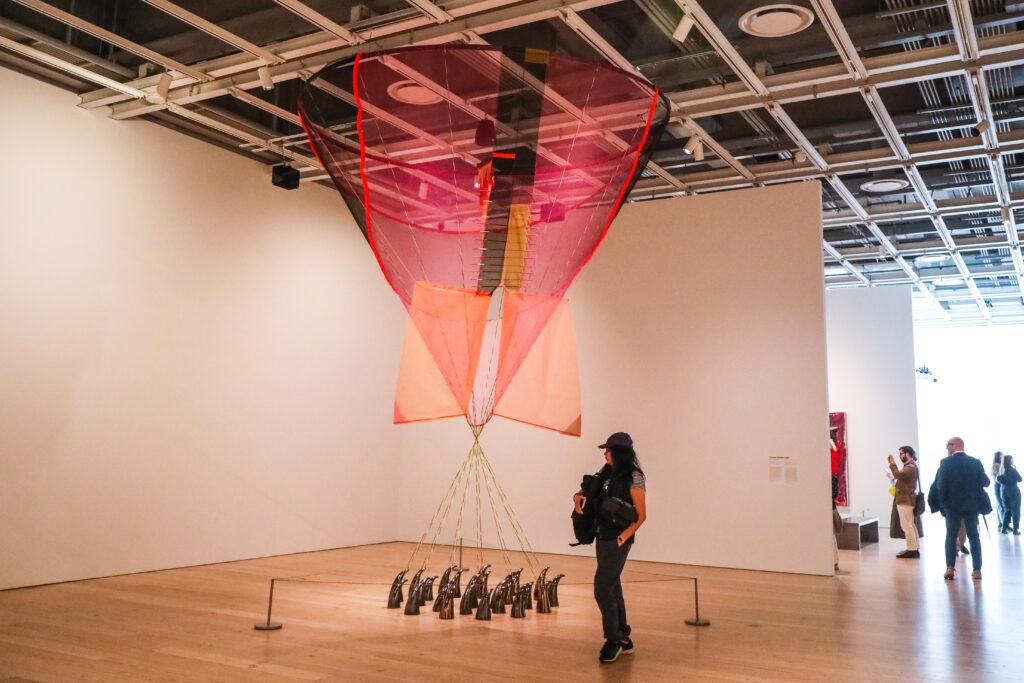
‘Unziwoslal Wasicuta,’ by Cannupa Hanska Luger (Photo by Scott Lynch)
Is the “other side” making art? If so, they don’t appear here. But, platforming such perspectives would only reignite protests. This Biennial, a “dissonant chorus,” sings the rallying cry of a diverse cohort of artists trying almost everything to capture a reality we can all agree on.
The post At the Whitney Biennial: Reaching for utopia, without protests appeared first on Brooklyn Magazine.

